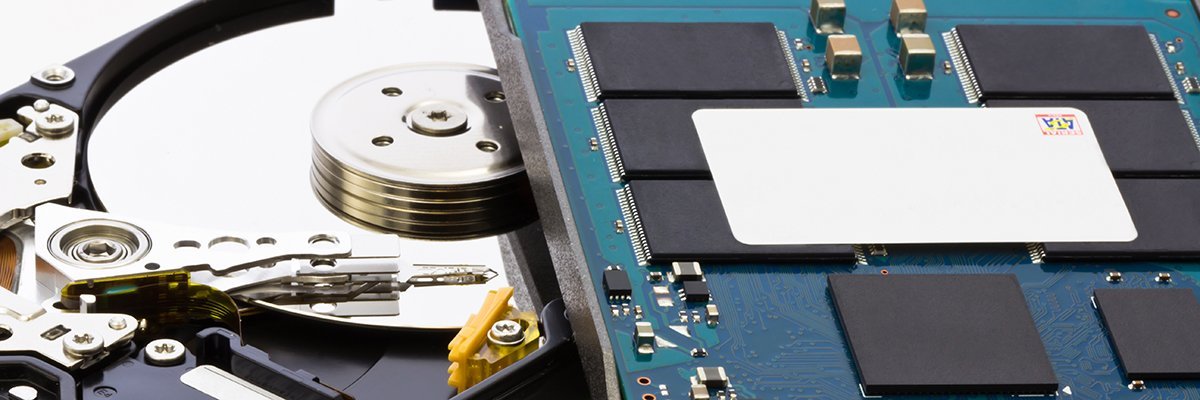
In this podcast, we look at the roadmap for spinning disk HDD capacity with Rainer W Kaese, senior manager in business development for storage products at Toshiba Electronics Europe.
We talk about the likely disk drive capacities we can see in the next four or five year as we head into the 30TB and 40TB range. Kaese discusses the use of shingled magnetic recording (SMR) – i.e. overlapping drive write tracks – and microwave-assisted writes as we contemplate capacities that head towards 40TB.
Kaese also talks about heat-assisted magnetic recording (HAMR), which would be necessary to get HDDs into the hundreds of TBs of capacity, and whether that can be achieved at an economical price-per-capacity.
Antony Adshead: We saw 20MB in 1992, 20GB in 2002, and 20TB today. So, what’s next? How will HDD makers push drive capacity beyond what it is currently?
Rainer W Kaese: Well, if we had 20MB, 20GB and 20TB within each 20 years then we should have 20PB in 20 years and 20EB in 40 years. That’s a little bit of a long reach, and probably 20PB and 20EB on a single HDD is a way beyond what we can think of today.
If you look at technologies like DNA storage or coding on quartz crystals it’s not that far out, but it won’t be HDDs anymore.
On hard disk drives as we know them today, we are in the 20TB range, and what we know we can manufacture in the next years for a reasonable price that people are willing to pay that matches the economics is something around 30TB to 40TB, maybe up to 50TB in the coming decades.
So, we are sure this will come as a product. We aren’t sure exactly when. Our challenge is to manufacture it at a cost level that makes sense. That we are working on. The physics, the development is finished. The technology is there.
But, that’s important to think of. We also have technology available that could potentially lead to a hard disk drive of 100TB to 200TB.
It is possible technology and physics-wise. However, what we don’t yet know is whether we can ever manufacture it for a reasonable price.
There could be a 100TB HDD in five years which may cost several tens of thousands of dollars because of new, very advanced and complicated technology. If at the same time you had just a 24TB hard disk drive that cost just a few hundred, that wouldn’t make sense, because HDDs are all about capacity and price.
What I can say is that we can expect the 40TB hard disk drive in the current environment of commercially driven price per capacity. Physically, 100TB to 200TB [is possible], but we don’t know if it will ever come. That depends on our optimisation and the final cost level at which we can manufacture it.
What capacities can we expect in the next five years, and which workloads will they be good for?
There are two types of developments that we are following. One is the classical HDD with the classical conventional magnetic recording as we know today.
For the next five years, we have a very firm roadmap that will bring us 24TB this year, 28TB in two years, and 30-something, probably 32TB, in four or five years. So, these are hard disk drives that work as we know it today, but as HDDs are the main mass storage where performance matters to some extent but it’s mainly cost-per-capacity, we are also focusing on SMR [shingled magnetic recording] to boost capacity with a little bit of compromise in terms of performance.
Within that range, we think the 30TB conventional magnetic recording can be expanded to about 40TB and more with SMR. There will be two types of HDD: the classical ones and the massively optimised ones for capacity.
Can you elaborate on the technologies involved for the next few years, and then those that lie beyond that for very high-capacity drives of 100TB and 200TB?
The main challenge of ever-increasing capacity in hard disk drives in the same form factor is that we need to miniaturise everything. We need to write smaller magnetic patterns and there is not enough magnetic energy to do this.
We need energy-assisted magnetic recording so we have to bring others more energy in addition to magnetism. The current technology that brings us into the 30TB range is what we call microwave-assisted magnetic recording. That helps to shrink the magnetic pattern to squeeze more and to bring us into that range, and it’s done by microwave generators.
However, these microwave generators cannot be miniaturised infinitely, so we know that at a 30TB to 40TB level they can’t be shrunk any more.
But there’s another technology that’s been in research for quite a long time, which is thermal or heat-assisted magnetic recording with a laser diode. That has potential for 100TB to 200TB because the laser can be miniaturised much more since it is a semi-conductor component.
We don’t know yet how far we can go, but that will [not] be the next technology where we will see more announcements, product and discussions soon, so basically the technology is for the later 2030s and 2040s.

Comentarios recientes